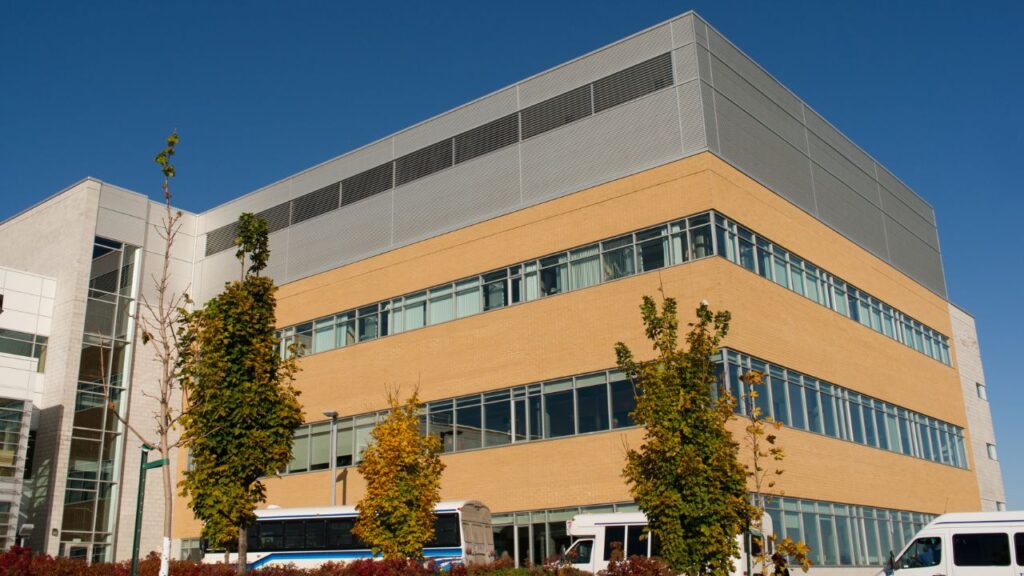Bid Strong, Bid Smart – Try Our Hospital Construction Cost Estimating Service!
- Accurancy
- Efficiency
- Transparency
- Customization
- Time Saving
- Professionalism
- Cost Control

When embarking on hospital construction projects, careful consideration of various aspects is crucial to ensure both efficiency and cost-effectiveness. Concrete formwork, an integral component of the construction process, plays a significant role in shaping the structural elements of a hospital. In this article, we delve into the various factors influencing concrete formwork costs in the context of hospital construction.

Concrete formwork serves as the mold into which concrete is poured to create the desired shape and structure. In hospital construction, precision and durability are paramount, making the selection and implementation of formwork a critical aspect. The formwork not only defines the visual aesthetics of the hospital but also influences the structural integrity and functionality of the built environment.

Fully Insured License
Hire Contractor For Hospital Construction

Make Informed Design Decisions Showcase Your Design Ideas
Get RenderingThe selection of formwork material is a critical decision with substantial implications for construction costs. Various options, including traditional timber, plywood, metal, and advanced engineered formwork systems, present distinct advantages. Timber, being cost-effective, is often chosen for projects with budget constraints. However, in the realm of hospital construction, where durability is paramount, engineered systems stand out. While they may involve a higher upfront cost, their reusability and efficiency contribute to long-term structural integrity, aligning with the stringent requirements of healthcare facilities.
The complexity of hospital structures necessitates a thoughtful choice of formwork type. Different structures may require traditional formwork, reusable modular systems, or custom-engineered solutions to accommodate intricate designs, curves, or unique architectural features. Specialized formwork tailored to the specific demands of hospital architecture may incur additional costs, but it ensures precise replication of intricate designs and shapes, contributing to the aesthetic and functional aspects of the healthcare environment.
The size and scale of a hospital project directly influence formwork costs, encompassing both material and labor expenses. Larger structures demand more formwork material and increased labor, leading to higher overall costs. Effective planning and optimization of formwork usage become imperative to control expenses while ensuring structural precision. Strategic project management and efficient use of formwork materials contribute to cost-effectiveness without compromising the integrity of the construction.

The architectural complexity inherent in hospital designs introduces a unique set of challenges for formwork. Hospitals often feature intricate designs, curves, and details that require custom formwork solutions. Crafting specialized formwork to meet these architectural specifications incurs additional labor and material costs. However, this investment ensures that the formwork aligns precisely with the envisioned design, contributing to the overall aesthetic appeal and functionality of the hospital structure.
Consideration of reusability and recycling potential is a key aspect of formwork selection, particularly in the context of hospital construction. Some formwork systems are designed for multiple uses, allowing for cost savings on subsequent projects. In the healthcare industry, where standardized designs may be employed across different facilities, the ability to reuse formwork becomes a valuable cost-saving strategy, promoting sustainability and efficiency in construction practices.
Skilled labor is indispensable for the proper installation and removal of formwork. The complexity of the formwork design, especially in hospital projects with intricate architectural features, can influence labor costs significantly. Efficient and experienced labor is an investment that contributes not only to the timely completion of the project but also has the potential to reduce overall costs. Skilled workers ensure the precision required for intricate formwork, minimizing the risk of errors and rework, which can contribute to cost efficiency in the long run.
In the realm of constructing hospitals, the choice of formwork materials is a nuanced decision that demands a delicate balance between cost considerations, durability requirements, and operational efficiency. It is imperative to weigh the short-term budget constraints against the long-term structural considerations to ensure that the selected materials not only meet immediate financial goals but also contribute to the enduring integrity of the hospital structure. Hospitals, as critical infrastructure, often prioritize materials that offer a harmonious blend of cost-effectiveness, resilience, and efficiency in the construction process. Striking this balance ensures that the formwork materials align with the unique demands of the healthcare industry, where precision and durability are paramount.

An integral aspect of cost optimization in hospital construction involves careful planning for the potential reuse of formwork. Evaluating the adaptability and condition of formwork systems for deployment in other sections of the current project or on future projects can yield significant cost savings over time. Well-maintained and adaptable formwork not only contributes to sustainability goals but also provides an economic advantage by reducing the need for frequent material investments. This strategic approach to reuse planning underscores a commitment to efficient resource utilization and is particularly relevant in hospital projects where standardized designs may be replicated across different sections or facilities.
Early and robust collaboration between architects, engineers, and construction teams is a cornerstone of successful hospital construction projects, especially concerning formwork. The intricate dance between the formwork design and the overall architectural vision necessitates a cohesive approach that considers both aesthetic aspirations and practical construction aspects. This collaborative synergy ensures that the chosen formwork aligns seamlessly with the architectural intent while also addressing critical cost implications. By fostering open communication and shared decision-making, the collaborative efforts of the design and construction teams pave the way for optimized formwork solutions that meet both creative and financial objectives.
Exploring efficient and time-saving formwork systems is a proactive strategy that can significantly impact the overall cost-effectiveness of hospital construction. While the initial costs of advanced formwork systems may vary, the potential reduction in labor and construction time can lead to substantial overall cost savings. These systems streamline the construction process, contributing to increased efficiency and precision in formwork installation and removal.

In the context of hospital projects, where timelines are often critical, the adoption of efficient formwork systems becomes an investment in both time and cost efficiency, ultimately contributing to the successful and timely completion of the construction endeavor.
On average, concrete formwork costs can range from $5 to $15 or more per square foot. However, hospital construction projects may fall on the higher end of this spectrum due to the specialized needs and precision demanded by healthcare facilities. This estimate includes both material and labor costs associated with formwork installation and removal.
The concrete formwork costs associated with hospital construction are a critical consideration, given the unique demands of healthcare facilities. The selection of formwork materials, the complexity of the formwork type, and the intricacies of architectural designs all contribute to the overall expenses. Balancing cost-effectiveness with the need for precision and durability is paramount. Strategies such as careful material selection, reuse planning, collaboration with design and construction teams, and the adoption of efficient formwork systems play crucial roles in optimizing costs. In the realm of hospital construction, where precision is essential, these considerations collectively contribute to successful projects that meet both creative and financial objectives. The general cost range for concrete formwork in hospital construction varies from $5 to $15 or more per square foot, encompassing material and labor costs associated with installation and removal.
Concrete formwork serves as the mold into which concrete is poured to shape the structural elements of a hospital. It is crucial for achieving precision, durability, and influencing both the visual aesthetics and functionality of the constructed environment.
The selection of formwork material, whether traditional timber, plywood, metal, or engineered systems, has significant cost implications. While timber may be cost-effective, engineered systems, despite a higher upfront cost, offer reusability and efficiency, aligning with the durability requirements of healthcare facilities.
Skilled labor is essential for proper formwork installation and removal. The complexity of the formwork design, especially in hospitals with intricate architectural features, can influence labor costs significantly. Efficient and experienced labor contributes to timely completion and has the potential to reduce overall costs.
Cost optimization in hospital construction involves strategic material selection, planning for formwork reuse, early collaboration between design and construction teams, and the exploration of efficient formwork systems. These strategies contribute to a balance between cost-effectiveness and the precision required in healthcare facility projects.
On average, concrete formwork costs for hospital construction can range from $5 to $15 or more per square foot. The specialized needs and precision required in healthcare facilities may place hospital projects on the higher end of this spectrum. The cost estimate includes both material and labor expenses associated with formwork installation and removal.
Here I am going to share some steps to get your concrete formwork cost for hospital construction estimate report.
You can send us your plan on info@estimatorflorida.com
Before starting your project, we send you a quote for your service. That quote will have detailed information about your project. Here you will get information about the size, difficulty, complexity and bid date when determining pricing.
Our team will takeoff and estimate your project. When we deliver you’ll receive a PDF and an Excel file of your estimate. We can also offer construction lead generation services for the jobs you’d like to pursue further.



561-530-2845
info@estimatorflorida.com
Address
5245 Wiles Rd Apt 3-102 St. Pete Beach, FL 33073 United States
561-530-2845
info@estimatorflorida.com
Address
5245 Wiles Rd Apt 3-102 St. Pete Beach, FL 33073 United States
All copyright © Reserved | Designed By V Marketing Media | Disclaimer